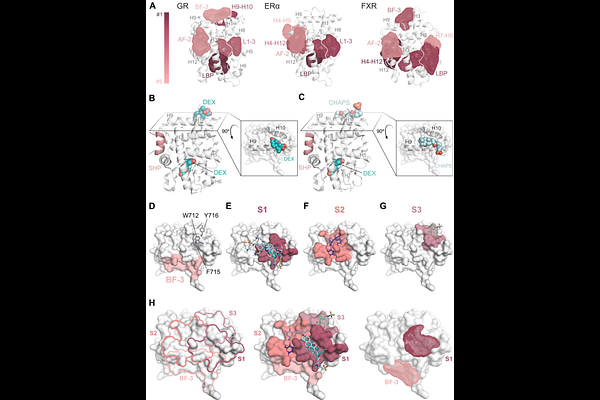Bile acids target an exposed cavity in the glucocorticoid receptor modulating receptor self-assembly, chromatin binding and transcriptional activity

Bile acids target an exposed cavity in the glucocorticoid receptor modulating receptor self-assembly, chromatin binding and transcriptional activity
Jimenez-Panizo, A.; Johnson, T. A.; Wagh, K.; Alegre-Marti, A.; Montoya-Novoa, I.; Lafuente, A. L.; Eckhard, U.; Rodriguez-Lumbreras, L. A.; Hoang, L.; Stortz, M.; Abella, M.; Goldstein, I.; Valledor-Fernandez, A.; Varticovski, L.; Arias, I.; Presman, D. M.; Stavreva, D. A.; Fernandez-Recio, J.; Fuentes-Prior, P.; Hager, G. L.; Estebanez-Perpina, E.
AbstractThe glucocorticoid receptor (GR) is an essential transcription factor that controls metabolism and homeostasis. Glucocorticoids (GCs) activate the GR upon occupying the internal ligand-binding pocket (LBP) of its ligand-binding domain (GR-LBD), which has been the focus of most previous structure-function studies. Synthetic GCs such as dexamethasone are widely used to treat inflammatory diseases, but their chronic use results in major side effects, whose molecular underpinnings remain unresolved. Here we present a thorough analysis of the topography of GR-LBD and its ability to bind small-molecule compounds, especially cholesterol derivatives. We show that one important class of steroids, bile acids, bind to previously unidentified and highly conserved, surface-exposed cavities on GR-LBD. We show that bile acids affect GR turnover and self-assembly in living cells, modulating receptor transcriptional activity. These findings reveal a previously unrecognized mechanism of GR regulation, with implications for the design of GCs with novel mechanisms of action.